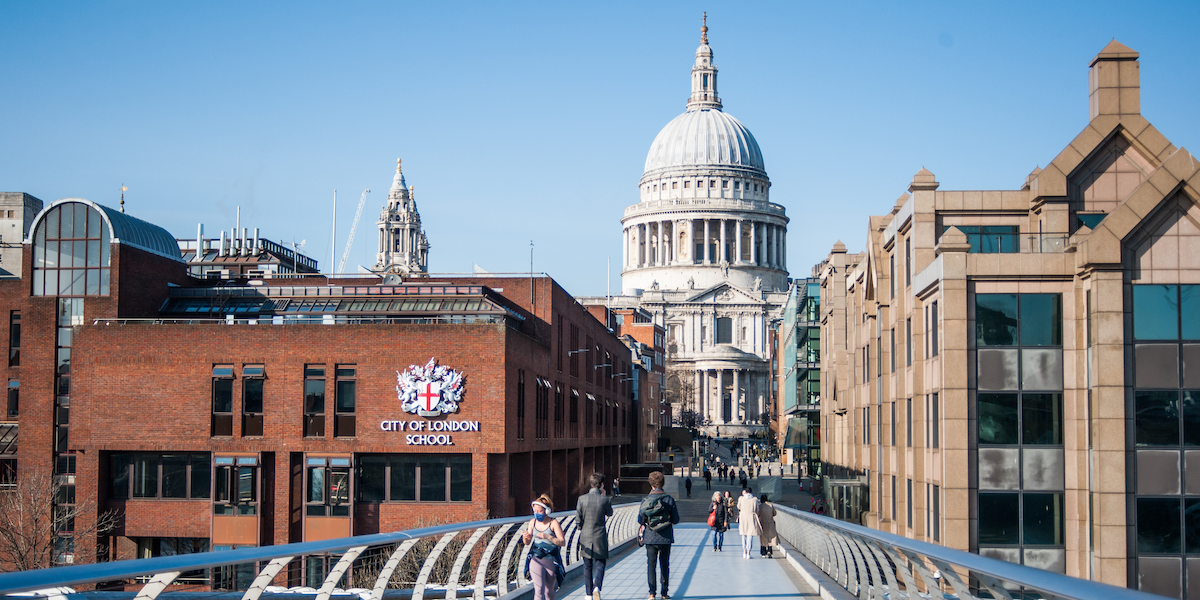The Square Mile is one of the most historic places in the UK, with boundless old and new landmarks located throughout. On just about every street, you’ll find an ancient church, livery or store front. But what are the City of London’s must-see landmarks and attractions?
Allow us to help you out with that; we are City experts, after all. Here is our comprehensive list of all the top sites located in the City, which any local resident or international traveller must tick off when exploring the capital.
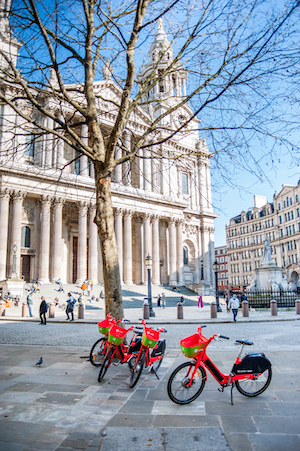
St Paul’s Cathedral
St Paul’s Cathedral has dominated London’s skyline for over 300 years – with building regulations remaining to this day which prohibit people from building skyscrapers around it. Locals will have walked past it over and over again, but many have not made it inside. This is all too foolish.
With your sightseeing ticket, you can walk in the footsteps of royalty and political leaders on the Cathedral floor; climb the dome to try the unique acoustics of the Whispering Gallery; go even higher to enjoy some of the most spectacular views over London from the Stone and Golden Galleries; or head down to the crypt where our nation’s heroes are buried. Alternatively, you can come here for mass and see what makes this space so special for free. Just make sure you respect those who’ve come to worship.
St. Paul’s Churchyard EC4M 8AD
Monument
The Monument to the Great Fire of London, more commonly known simply as the Monument, is a Doric column situated right by the northern end of London Bridge. It was built between 1671 and 1677 to commemorate the Great Fire of London and to celebrate the rebuilding of the City. Many will have wandered around the base of the Monument, but you’ve got to take the climb up to the top. Do some stretching before scaling the column to get some damn fine 360-degree panoramic views of the Square Mile.
Fish Street Hill EC3R 8AH
Guildhall
This is the home of the City of London Corporation – the local authority for the Square Mile which is run by numerous guilds and elected officials. You can take tours of the building, which is steeped in 800 years of history. Explore everything from the Gothic grandeur of the Great Hall to the largest surviving medieval crypts in London. But it doesn’t end there. Make sure you come to the Guildhall yard in summer for pop-up food stalls and outdoor yoga classes. See how the modern City lifestyle exists so well within such historic spaces.
Guildhall, Gresham Street EC2V 7HH
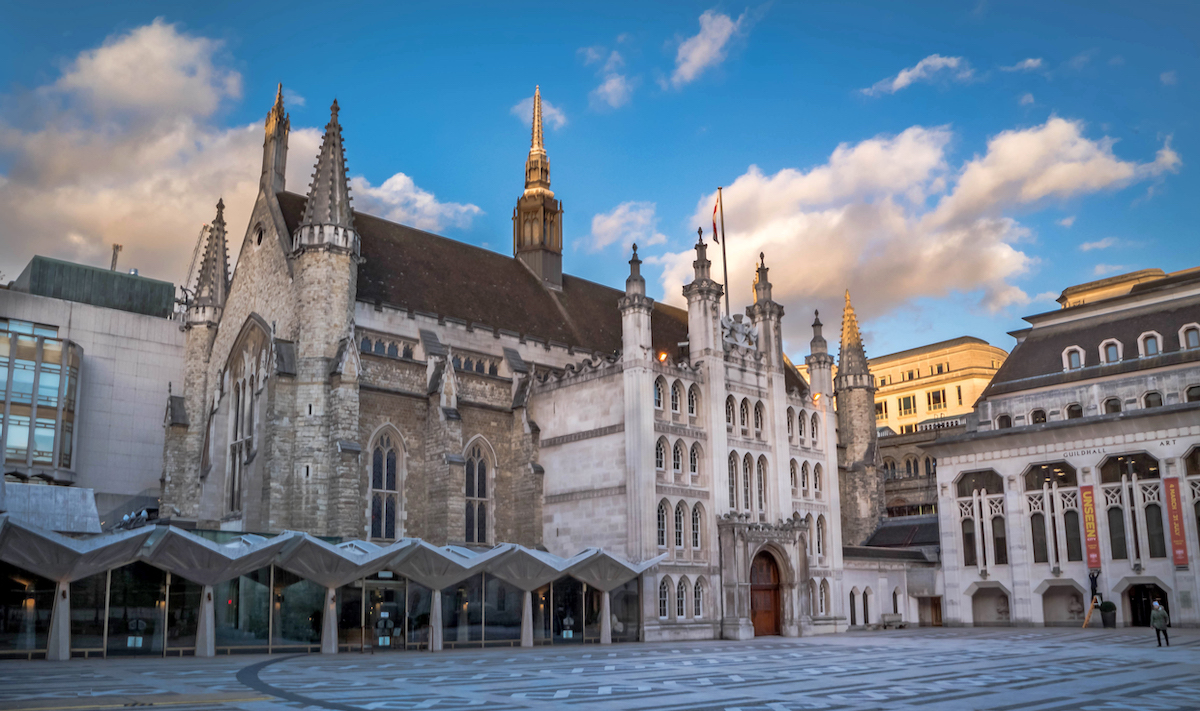
Smithfield Market
Smithfield’s meat market dates from the 10th century and is now London’s only remaining wholesale market in continuous operation since medieval times. But sadly, this won’t be the case for much longer. The traders are being relocated far beyond the borders of the City so that the massive Smithfield Market building can be transformed for modern times. A large part of it will become the new home of the Museum of London, while other parts will turn into retail stores and mixed-use public spaces. But, before that transformation happens, we recommend you visit now. See how Smithfield Market has remained virtually unchanged (except for the necessary updates in health and safety measures for selling meat, of course) and take in the Victorian architecture, designed by Sir Horace Jones who also designed Leadenhall Market, Guildhall and Tower Bridge. It is a must-see City landmark.
Grand Avenue EC1A 9PS
Tower Bridge
This is perhaps the most recognised landmark in all of the UK – well, perhaps following Big Ben and the Houses of Parliament. Walk along the bridge, taking in all the ornate design alongside the impressive views of the Tower of London and all the buildings lining the Thames. But the best views are found further up. Head to the glass-floored observation hall to get some of the best views in London – they even do yoga up here folks! But that’s not the only reason to come here.
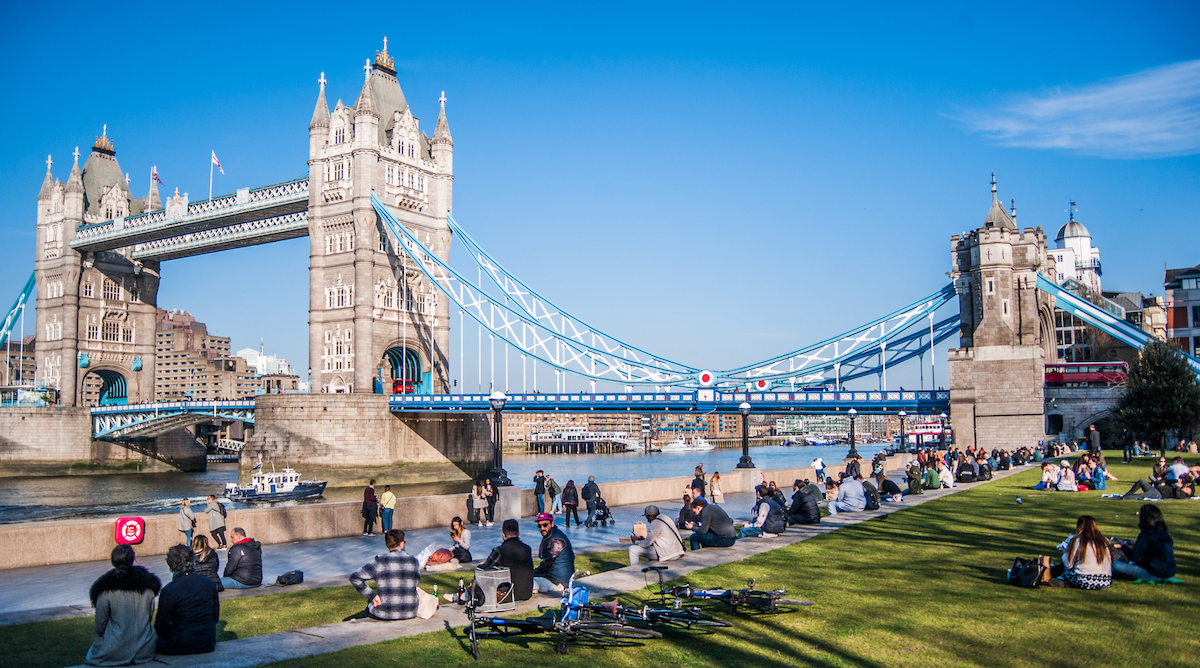
Tower bridge is also home to one of London’s best kept secrets – the Bascule Chamber. Built as an operational area to allow for the movement of the Bridge’s huge counterweights used during Bridge Lifts, this cavernous brick-lined, subterranean space is normally out of bounds for everyday visitors. But, on rare occasions, this space is opened up for public use and provides a spectacular venue for special events. Keep an eye out for live music events taking place down here.
Tower Bridge Road SE1 2UP
Guildhall Art Gallery
Located right next to Guildhall, this little-known art gallery is home to the City of London Corporation’s growing art collection. The Gallery shows a changing display of about 250 artworks from its collection of paintings, drawings and sculpture, in addition to a programme of temporary exhibitions. Be sure to check their website for updates on exhibitions and events. And don’t miss the ancient Roman amphitheatre which was found when rebuilding the Gallery. There are so many layers of history in the City – with the amphitheatre allowing us to see what life may have been like back when the area was first settled.
Guildhall Yard EC2V 5AE
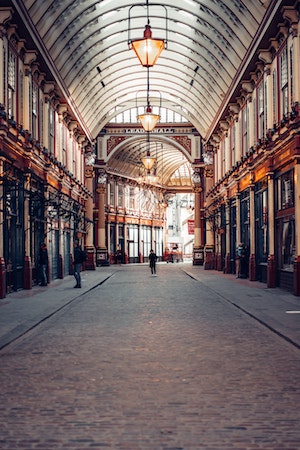
Leadenhall Market
Many will know of this Victorian-era marketplace for one reason only – it was the inspiration for Diagon Alley in the Harry Potter films. And that’s great. Wander around the market lanes, pretending you’re not a Muggle for a day. But there’s so much more to see and do here. Check out all the old school pubs and restaurants, retail stores and public events.
We especially love visiting Leadenhall Market around Christmas time, when it gets a festive makeover. It’s also home to an evolving series of art installations with both Culture Mile and the Sculpture in the City programme. Take your time exploring this ancient architectural gem, surrounded by skyscrapers. And, if you have time to take a guided tour, be sure to learn more of the market’s long and whacky history. A lot of crazy stuff has happened here!
Gracechurch Street EC3V 1LT
Bevis Marks Synagogue
Bevis Marks Synagogue is the oldest synagogue in the United Kingdom in continuous use (built in 1701). In fact, it is the only synagogue in Europe which has held regular services continuously for more than 300 years. For Sephardic Jews, the Bevis Marks Synagogue was a religious centre of the Anglo-Jewish world for more than a century and served as a clearinghouse for congregational and individual Jewish problems all over the world.
These included the appeal of Jews in Jamaica for a reduction in taxation (1736), the internecine quarrel among Jews in Barbados (1753), and the aiding of seven-year-old Moses de Paz, who escaped from Gibraltar in 1777 to avoid a forced conversion to Christianity. It is a place of living history. Locals and tourists alike can take tours of the synagogue, to see the ornate interiors and learn more of the building’s cultural and historical significance.
4 Heneage Lane EC3A 5DQ
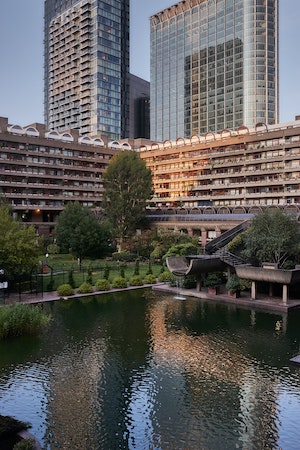
Barbican Centre
We can’t pretend that we aren’t madly in love with the Barbican Centre. These guys host some of the best creative events in the UK. Explore expertly curated art exhibitions featuring internationally acclaimed artists and see some of the best theatre shows, orchestra performances and immersive experiences.
Their offerings are diverse and plentiful. And are all housed within the incredible brutalist building which has its own glass conservatory which is open to the public on Sundays. Come here and explore the physical space (including the residential buildings surrounding it) before checking out some of their many events. We have no doubt that you’ll find something you love.
Silk Street EC2Y 8DS
Bank of England
This behemoth of a building looms over Bank Junction, looking like some kind of military barracks. But it didn’t always look as it does now – it has been through countless remakings. The Bank’s original architect, George Sampson, began the building in 1732-4. Sculptor and architect Sir Robert Taylor extended the façade and added the Rotunda between 1765 and his death in 1788.
The Bank’s official Architect and Surveyor, Sir John Soane, completed the original buildings over the period 1788-1833 — part of the works included surrounding the site with a windowless perimeter wall (1828). By the 1920s, the Bank was finding the building too small to cope with its increasing workload and consequent increase in staff numbers. Baker was appointed architect and he designed a building to replace the existing three storey complex, leaving its Soane walls in place. The new building has seven storeys above ground and three below, and it required the demolition of most of the earlier structure. It is now not only home to the country’s central bank, but also a small museum exploring finance and banking in the UK.
Threadneedle Street EC2R 8AH
Museum of London
The Museum of London currently occupies a large site at Barbican (on the London Wall), but it will soon move to Smithfield Market. There, it will be totally modernised. But what it shows and tells will remain the same. The Museum of London documents the history of the UK’s capital city from prehistoric to modern times. It also has the largest urban history collection in the world, with more than six million objects (and growing). New additions include viral tweets relating to live in London during Covid as well as the enormous Trump baby blimp which flew over London during the former Presidents visit to the Capital – we can’t wait to see this one at the new Smithfield site!
150 London Wall EC2Y 5HN
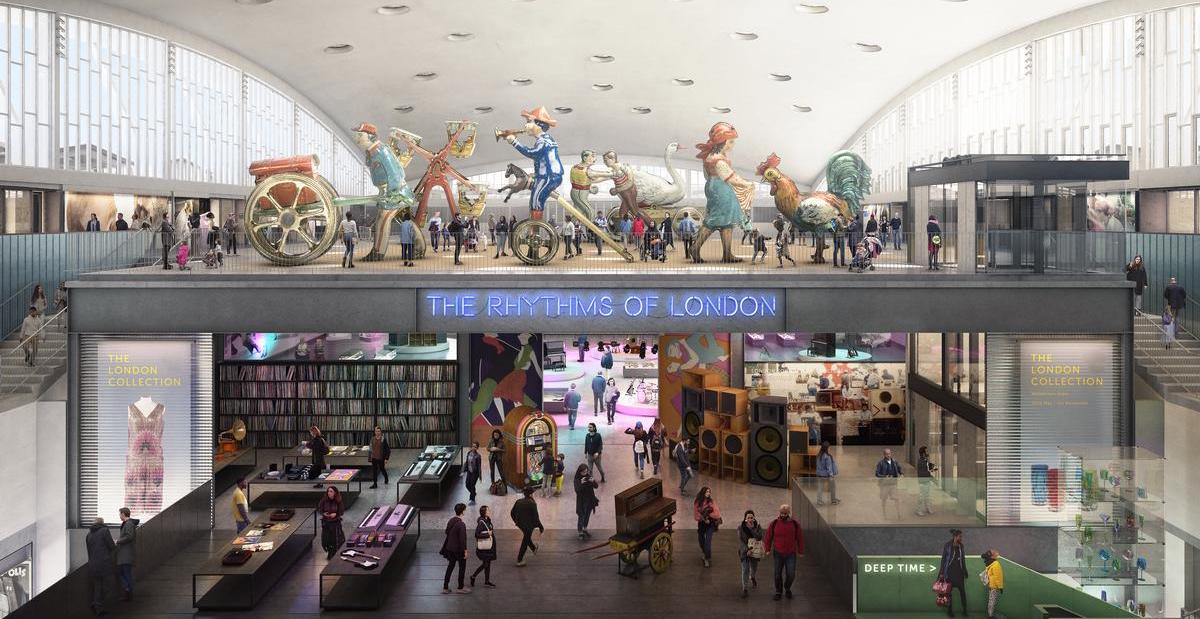
Old Bailey
The Old Bailey, also known as Justice Hall, the Sessions House, and the Central Criminal Court, was named after the street in which it was located, just off Newgate Street and next to Newgate Prison, in the western part of the City of London. Over the centuries the building has been periodically remodelled and rebuilt in ways which both reflected and influenced the changing ways trials were carried out and reported. The present building dates from 1902 and was officially opened by King Edward VII on 27 February 1907. It was designed by E. W. Mountford and co-occupies the site of the demolished prison. Above the main entrance is inscribed the admonition: “Defend the Children of the Poor & Punish the Wrongdoer”.
The Old Bailey EC4M 7EH
The Royal Exchange
They Royal Exchange is a kind of strange building. For years, when we came into the City of London, we just assumed it was some kind of historic government building. It sits on Bank Junction, rivalling the architecture of Mansion House and the Bank of England – but what lies inside is vastly different. The Royal Exchange is now a high-end shopping centre. But The Royal Exchange has seen many different uses throughout its extraordinary history, since its origins as London’s first purpose built trading centre in 1566. In 1660, two additional floors were added to effectively make it the countries first shopping mall.
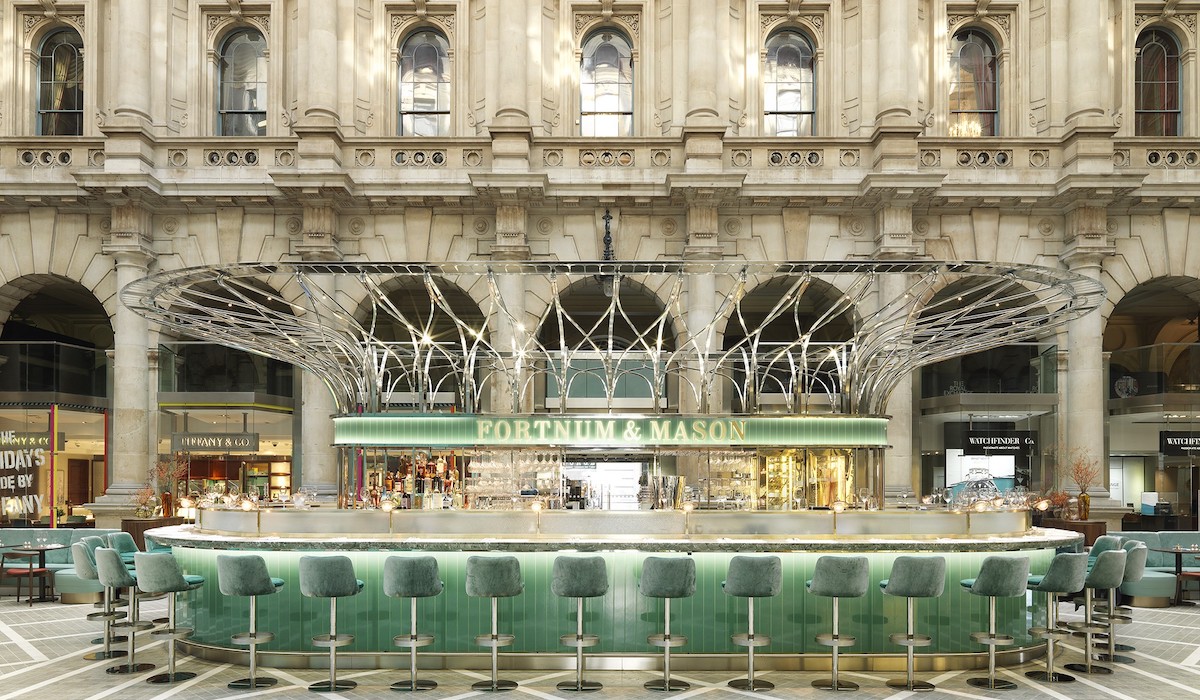
Six years later, it was destroyed in the Great Fire of London. It was rebuilt but then burn down again in 1838. It was rebuilt again in 1844 but abandoned during the war around 1941. It then became a small theatre and briefly a stick exchange once more. But it wasn’t until 2001, when it became what it is today – the home of many luxury fashion brands. Now, we mostly come to window shop and drink Champagne at the F&M bar, before exploring more of the Square Mile.
Cornhill EC3V 3LR
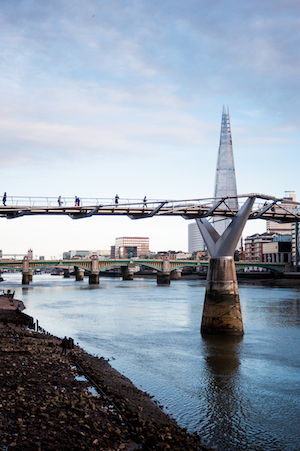
Millennium Bridge
This is one of the youngest City of London landmarks. The steel suspension bridge is made for pedestrians crossing the River Thames in London, linking Bankside with the City of London. More specifically, it takes you from St Paul’s Cathedral over to the Tate Modern.
Londoners nicknamed it the “Wobbly Bridge” after pedestrians experienced an alarming swaying motion on its opening day. The bridge was closed later that day and, after two days of limited access, it was closed again for almost two years so that modifications and repairs could be made to keep the bridge stable and stop the swaying motion. It reopened in February 2002 and has since been used in countless films include Harry Potter and Guardians of the Galaxy.
Thames Embankment
Mansion House
Mansion House is the official residence of the Lord Mayor of London. Think of it as the City of London’s White House or 10 Downing Street. But Lord Mayors didn’t always have their own residence in the Square Mile. Until the mid-18th century, Lord Mayors used their own houses or livery halls for their work as head of the City’s governmental, judicial and civic functions. The idea of creating a permanent residence came after the Great Fire of 1666 to provide a house for Lord Mayors who did not have their own livery hall.
It was almost a century later however, that the architect and Clerk of the City’s Work, George Dance the Elder, was chosen to design and build Mansion House. The first stone was laid in 1739, and the first Lord Mayor to take up residence was Sir Crispin Gascoigne. The House was completed in 1758. It is now also used for hosting many official events, and houses some of the City of London Corporation’s fine art collection. You can book tours, to see the artwork and varied interior design – be sure not to miss the ornate Egyptian Hall and Old Ballroom.
Walbrook EC4N 8BH

